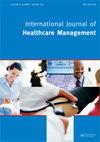Is the Workload Indicators of Staffing Needs (WISN) method rigorous enough to tell us how many nurses we need in a general hospital?
IF 1.1
Q4 HEALTH POLICY & SERVICES
International Journal of Healthcare Management
Pub Date : 2023-10-18
DOI:10.1080/20479700.2023.2269670
引用次数: 0
Abstract
ABSTRACTThis study aimed to evaluate the practical use of the Workload Indicators of Staffing Needs (WISN) method in a general hospital in Iran. This method was used to determine the staffing needs of nurses in various hospital units, and the study examined the gap between the theoretical calculations and the actual use of the data in the hospital. Data was collected through a mixed-method approach including observations, interviews, and document analysis. The results showed that the WISN method indicated a surplus of nursing staff and no work pressure on nurses. However, the method did not account for the complexity of nurses managing multiple tasks simultaneously, and the low bed occupancy and low hospital revenue raised concerns about the excess of nurses obtained by the WISN method. The study suggests that decision-making on staff arrangements should not be solely based on WISN's numbers, and modalities of nursing care should also be considered. While the WISN method is important in determining nurse workload, it must be used with other factors to ensure the standard of patient care is not compromised. This study contributes to the understanding of the practical use of the WISN method in the context of Iran's healthcare system.Abbreviations: WISN: Workload Indicators of Staffing Needs; MSA: Main healthcare services, Support, and Additional activities; ED: Emergency Department; WHO: World Health Organization; AWT: Available Working Time; CAF: Category Allowance Factor; IAF: Individual Allowance Factor; CAS: Category Allowance Standard; IAS: Individual Allowance Standard; LMICs: Low and Low Middle Income CountriesKEYWORDS: Workload Indicators of Staffing Needs (WISN)human resourcenursing staffIranhospital AcknowledgementsWe would like to express our gratitude to all the employees of the under-study hospital for providing the necessary data.Disclosure statementNo potential conflict of interest was reported by the author(s).Ethics approvalEthics approval for this study was granted by the Isfahan university of medical science ethics committee (299038). (Email: ethics@behdasht.gov.ir, phone: 0098-02181455615).Additional informationFundingThis study is financed by the Health Management and Economics Research Center in the design of the study and collection, analysis, and interpretation of data.Notes on contributorsAsal Sadat Niaraees ZavareAsal Niaraees graduated from Isfahan University of Medical Sciences, earning both a Bachelor's degree in Health Services Management in 2017 and an MSc degree in 2020. Since 2020, Asal has been employed in the Quality Improvement Department and serves as a member of the Research Council at Issa-ben-Maryam Hospital and Dr. Beheshti Hospital. During her MSc studies, Asal conducted a comprehensive research project exploring the feasibility of hospital-based palliative care in a referral hospital. Currently, Asal is pursuing a PhD in Health Economics, where she is engaged in various research endeavors. Her research areas encompass economic evaluation, palliative care, elderly care, human resource management, and other pertinent topics that contribute to advancing healthcare practices.Faezeh AkbariFaezeh Akbari completed master's degree in the field of health services management. Currently, she is working as a researcher in the Health Management and Economics Research Center and is in charge of quality improvement coordinator of Issa Ibn Maryam Hospital. She is also a member of the charity association of Issa Ibn Maryam Hospital. Her research focus is on human resources, bed management, and public and private partnerships in health systems.Maryam ZahmatkeshDr Maryam Zahmatkesh is currently a lecturer in Healthcare Management at Royal Holloway University of London. Prior to that, she was a lecturer in HRM at Aston Business School, where she taught various HRM modules at different levels. She was also the course director and lecturer for Medical Management and Leadership at Aston Medical School. She conducted her PhD at the Royal Holloway University of London. Her Ph.D. was a comparative qualitative case study of the autonomy exercised by middle managers in healthcare organisations in England and Iran. She has a Masters in ‘Leadership and Management in Health' and Bachelor in ‘Healthcare Management'. She has mainly worked in the areas of decentralisation in various forms including autonomy, international comparative research, middle managers and identity. Prior to joining the academia, she was a general manager in hospitals in both public and private sector. Her role included the supervision of all aspects of the day-to-day smooth running of the hospital, such as managing the HR, finance, access, targets and quality standards as well as contributing to the strategic planning. She has worked with a wide range of managers and clinicians at different levels.Masoumeh Alizadeh BazgirMasoumeh Alizadeh completed bachelor's degree in nursing and a master's degree in public administration. First, she was the operating room supervisor for 3 years, then she was the supervisor of the emergency department for 3 years and the nursing manager for about three months, and after that, she was head of quality improvement coordinator of Sina and Isa ibn Maryam hospitals for 6 years, and finally, she started her activity as the manager of Isa ibn Maryam hospital.Nasrin ShaarbafchizadehDr Nasrin Shaarbafchizadeh studied healthcare management at the doctorate level and was an Associate professor of the faculty of Isfahan University of Medical Sciences and currently an Associate professor of the faculty and vice- chancellor for research of the hospital management research center in Iran University of Medical Sciences. She was vice- chancellor for research of the faculty for about 4 years in Isfahan University of Medical Sciences. She has done studies in the fields of the health system financing, health tourism, human resource management and quality management in the hospitals.人员需求工作量指标(WISN)方法是否足够严格,可以告诉我们综合医院需要多少护士?
从3年的手术室主管,到3年的急诊科主管,再到3个月左右的护理经理,再到6年的Sina和Isa ibn Maryam医院的质量改进协调员,最后,她开始了Isa ibn Maryam医院的经理工作。Nasrin Shaarbafchizadeh博士在博士阶段学习医疗保健管理,曾任伊斯法罕医学科学大学副教授,现任伊朗医学科学大学医院管理研究中心副教授和副校长。她在伊斯法罕医学大学担任了4年的研究副校长。她在卫生系统融资、卫生旅游、人力资源管理和医院质量管理等领域进行了研究。
本文章由计算机程序翻译,如有差异,请以英文原文为准。
求助全文
约1分钟内获得全文
求助全文
来源期刊

International Journal of Healthcare Management
HEALTH POLICY & SERVICES-
CiteScore
5.40
自引率
9.50%
发文量
77
 求助内容:
求助内容: 应助结果提醒方式:
应助结果提醒方式:


